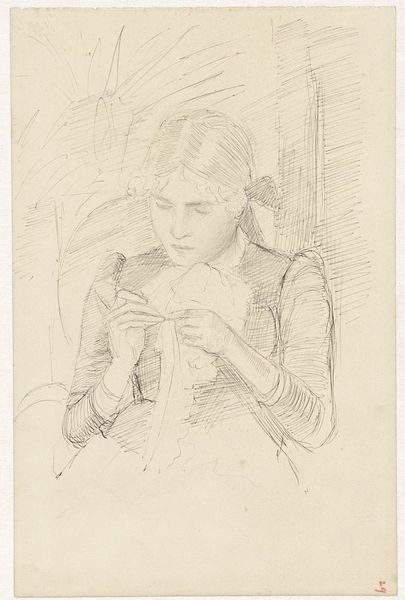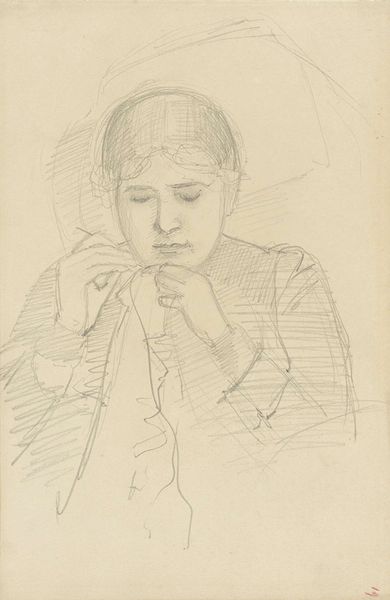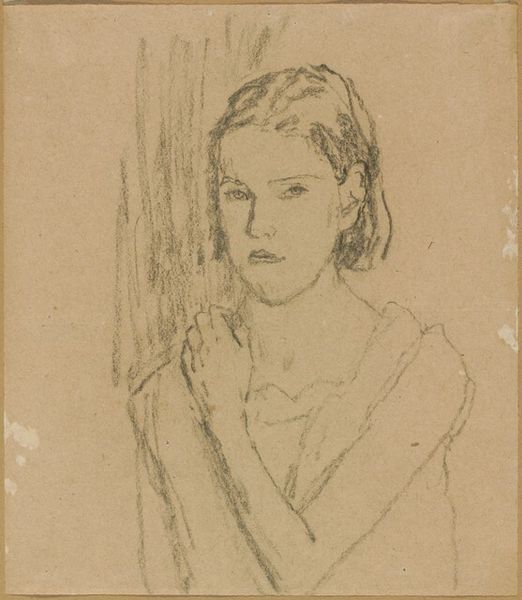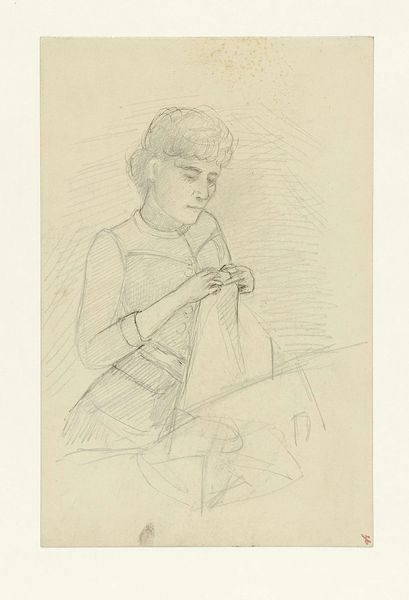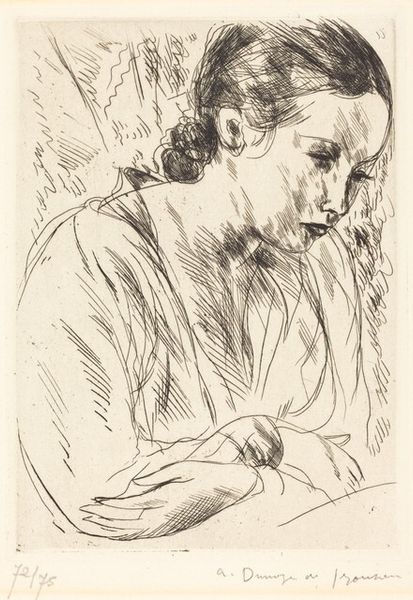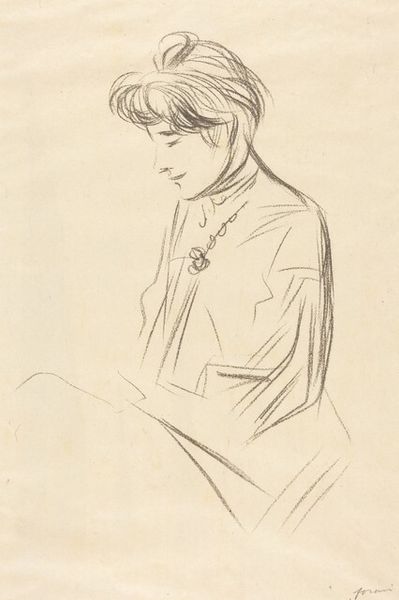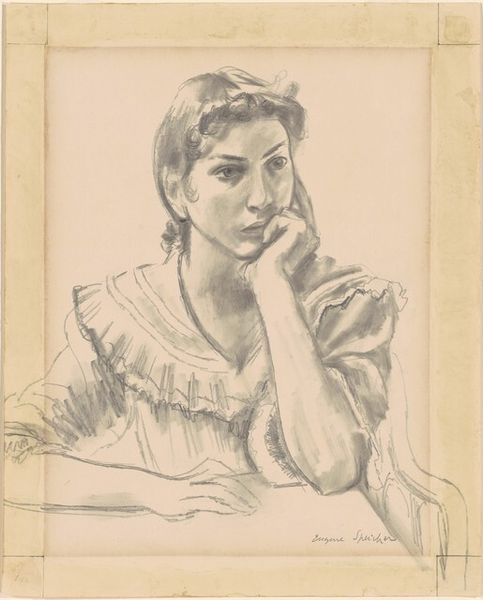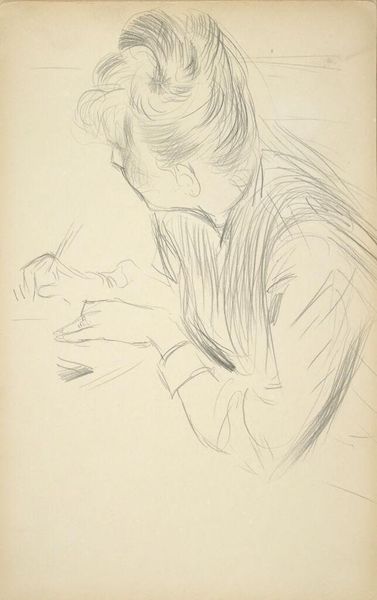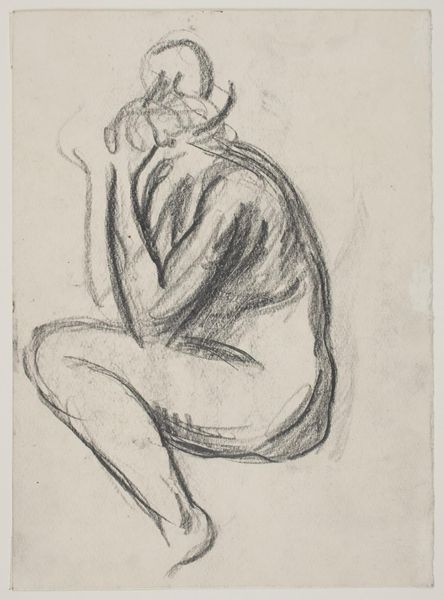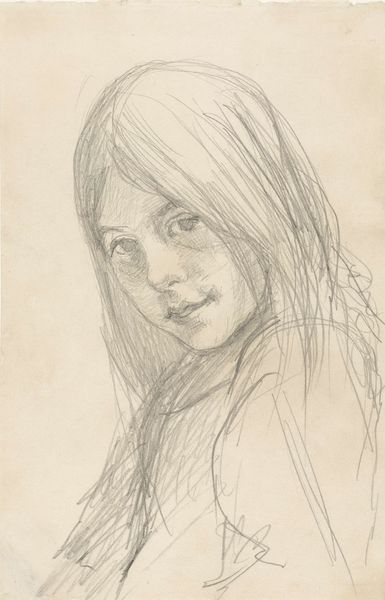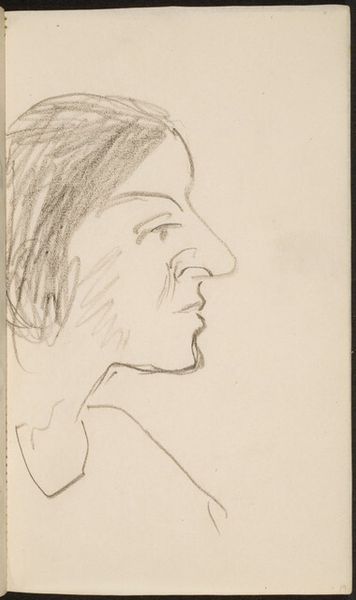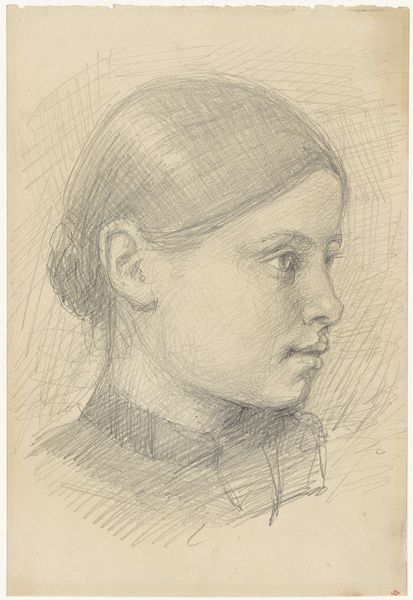
drawing, pencil
#
portrait
#
drawing
#
figuration
#
pencil drawing
#
romanticism
#
pencil
#
portrait drawing
#
academic-art
Copyright: Public Domain: Artvee
Editor: Here we have Wilhelm Marstrand's pencil drawing, "Seated Italian Woman, Bust Portrait," created sometime between 1810 and 1873. The woman's gaze is directed upwards, and the piece evokes a sense of quiet contemplation. What do you see in this work, especially considering the time it was made? Curator: It’s interesting that you pick up on the contemplative mood. Given Marstrand’s context – his presence within the Danish Golden Age painting, when national identity and cultural narratives were being carefully constructed – this portrait encourages us to think about the representation of the “Italian woman” as a symbol. Is she a romanticized figure, exoticized for a Danish audience? How might her clasped hands and upward gaze play into notions of piety or submission expected of women, particularly in the context of colonialist attitudes towards Italy? Editor: I hadn't considered the colonial aspect. The upward gaze almost feels like longing. But I see your point about how she might have been viewed. Curator: Exactly! We have to examine how identities are projected onto others through the lens of power. And consider, who was given the space and platform to produce such portrayals, and who was not? Does Marstrand humanize his subject, or does he reinforce stereotypes for the consumption of a particular social class? Editor: So it's not enough to simply appreciate the artistic skill; we have to ask critical questions about representation and power dynamics. Curator: Precisely. Art can reinforce or challenge existing power structures. Thinking critically about what narratives are being told – and whose stories are being left out – is central to an activist approach to art history. Editor: That gives me a lot to consider; I see now there’s a whole other dimension to portraits. Curator: Indeed. By viewing art as a reflection of social and historical forces, we can foster a more nuanced and engaged understanding of the world.
Comments
No comments
Be the first to comment and join the conversation on the ultimate creative platform.
